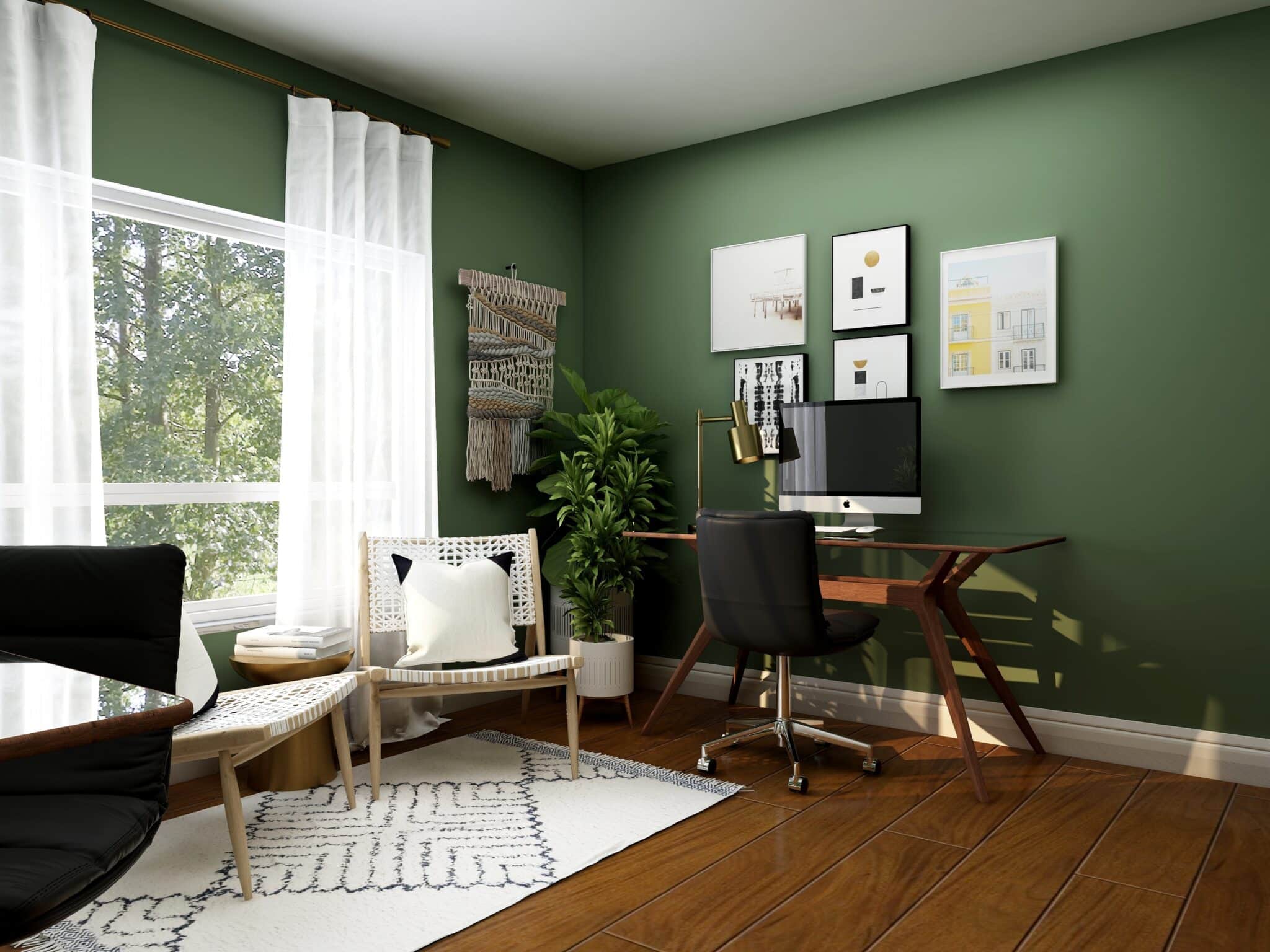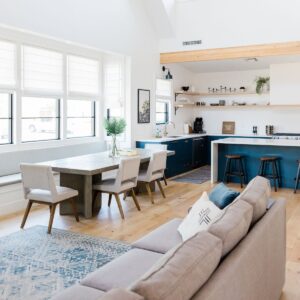When we are working from home a lot more, it is becoming more essential than ever to have a home office. When the pandemic first hit and changed how we worked, it felt appropriate to set up a temporary workstation at the kitchen table or in the living room corner. Yet now, with hybrid working a norm, a home office is essential to maintain professionalism on video calls and to help separate life and work a little in the home.
While a lucky few can set up a spare room as an office, others with limited space must be imaginative in their design. It is even more important to get creative when looking to create a design on a budget. Here we look at ways you can make this home office without spending a fortune.

Photo by Collov Home Design on Unsplash
Choose the best area for your workstation.
Any home office design ideas depend on where you can spare for your desk. Choosing this area of your home is one of the essential parts of this process. It needs to be somewhere where there isn’t high traffic, and you can get on without disruption or distraction. Equally, it needs to be somewhere that you can walk away from when your working day is done, keeping a separation from your home life.
Whether it is an area under the stairs, a corner of a living room, an old walk-in closet, or a spare room, making this first decision will impact the success of the rest.
Dividers!
There are two sorts of dividers that are going to revolutionise your office space in your home. The first is a wall divider. If your home office is in a well-used living space, then the wall divider can act as a barrier to you and the rest of the household, letting them know you are busy. At the end of the day, the divider can be used to create a visual barrier between you and your work.
Another divider can be used in drawers. When working in a small space, there is nothing more practical than a tub that keeps essential supplies separate and organised. It is possible that a simple investment of a fiver could revolutionise your working day or at least stop you from getting frustrated when you can’t find a paperclip.
The right desk
It is tempting to believe that the desk is an essential item in your office. Of course, having somewhere to sit and to lean against with your laptop is handy. Yet, it doesn’t have to be huge. Choosing the desk for your space and leaving room for other crucial ingredients is essential. There are consoles, modular, L-shaped, and flip-up and fold-down desks. In short, there is the perfect desk for the area of your home you have chosen.
Storage!
The one ingredient you cannot forget, though most often do, is storage. It would help if you had places to put things that can be easily found. The point of your home office design is to help you be as efficient and productive as possible. Therefore, seriously considering shelves, drawers, tubs, and cupboards can make a massive difference.
If you have some money to invest, here is the place to use it. It is not just that you want to do well at work, but you want to keep your home looking lovely too.
Some comforts
Large Enterprises like Facebook and Google spend a lot of time and money designing workplaces that increase the effectiveness of their teams. While thinking about the visual design of your home office might seem frivolous and unimportant, it is far from it. You will be spending a good proportion of your waking time in this area of your home; how you feel in this space impacts your overall feelings.
You do not need to go crazy with this interior design. Yet, you might want to consider what personal possessions will bring you some joy. Is there a picture that can go on the wall? Can you buy some houseplants to put around the area, improving the look and the air quality in one go?
These small details should be far from an afterthought. It may be where you work, but it is also an area of your home you want to be comfortable and feel at your best.
Conclusion
In a perfect world, you would have a room with a desk, all the storage you need, and the ability to close the door on your work at the end of the day. For most, our home-office design requires one or two practical purchases that can simulate the comfort and usability of your workspace.


















Leave a Reply